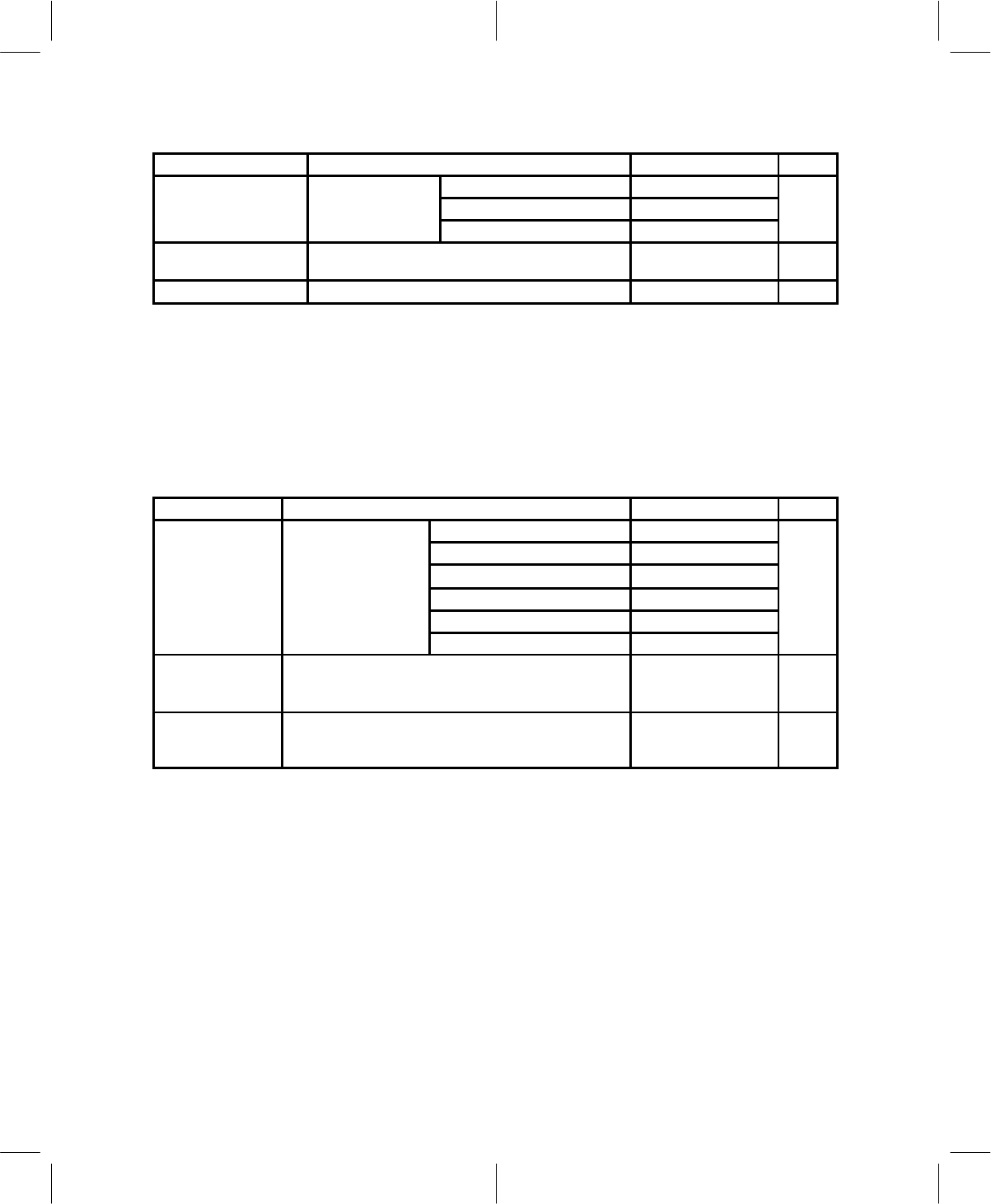
4–3
Table 4–3. Receive (RX) Channel Frequency Response (FM Input in Analog Mode)
PARAMETER TEST CONDITIONS MIN TYP MAX UNIT
0 kHz to 6 kHz (see Note 1) ±0.5
Frequency response 2.5 V peak-to-peak
20 kHz to 30 kHz (see Note 2) –18
dB
34 kHz to 46 kHz (see Note 3) –48
Peak-to-peak group
delay distortion
2.5 V peak-to-peak, 0 kHz to 6 kHz 2 µs
Absolute channel delay 2.5 V peak-to-peak, 0 kHz to 6 kHz 400 µs
NOTES: 1. Ripple magnitude
2. Stopband
3. Stopband and multiples of stopband
The VHR can provide a bias voltage for the received inputs when capacitively coupled from the RF section.
To meet noise requirements, the VHR output should have an external decoupling capacitor connected to
ground. The VHR output buffer is enabled by the OR of TXEN, FMVOX, and IQRXEN. The VHR output is
high impedance otherwise.
In the digital mode, both the I and Q receive sides are enabled. Table 4–4 lists the receive channel frequency
response.
Table 4–4. Receive (RX) Channel Frequency Response (RXI, RXQ Input in Digital Mode)
PARAMETER TEST CONDITIONS MIN TYP MAX UNIT
0 kHz to 8 kHz (see Note 4) ±0.5 ±0.75
8 kHz to 15 kHz (see Note 4) ±1
Frequency
16.2 kHz to 18 kHz (see Note 2) –26
response
.
pea
-
o-pea
18 kHz to 45 kHz (see Note 2) –30
45 kHz to 75 kHz (see Note 2) –46
> 75 kHz –60
Peak-to-peak
group delay
distortion
0.125 V peak-to-peak, 0 kHz to 15 kHz 2 µs
Absolute channel
delay, RXI, Q IN to
digital OUT
0.125 V peak-to-peak, 0 kHz to 15 kHz 325 µs
NOTES: 2. Stopband
4. Deviation from ideal 0.35 square-root raised-cosine (SQRC) response.
When the I and Q sample conversion is complete and the data is placed in the RXI and RXQ sample
registers, the SINT interrupt line is asserted to indicate the presence of that data. This occurs at 48.6-kHz
rate in the digital mode and at 40-kHz rate in the analog mode. In the analog mode, only the RXQ conversion
path is used, and the RXI path is powered down.
4.3 Transmit Section
The transmit section operates in two distinct modes, digital or analog. The mode of operation is determined
by the MODE bit of the DStatCtrl register. In the digital mode, data is input to the transmit section by writing
to the TXI register. The resulting output is a π/4 DQPSK-modulated time division multiplexed (TDM) burst.
In the analog mode, the data is in the form of direct I and Q samples which are written to both the TXI and
TXQ registers, then D/A converted, filtered, and output through TXIP, TXIN, TXQP, and TXQN. The I and
Q outputs are zero-IF FM signals; that is, no baseband connection is necessary for FM transmission.
In the digital mode (MODE = 1), the data is written to the TXI register using the SINT interrupt to synchronize
the data transfer. The TCM4300 performs parallel-to-serial conversion of the bits in the TXI register and
encodes the resulting bit stream as π/4 DQPSK data samples. These samples are then filtered by a digital
